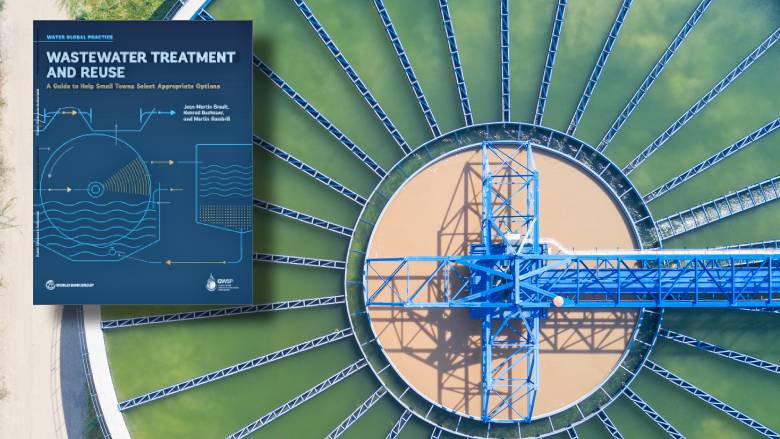Strategic Approaches to Improve Waste Water Treatment Efficiency and Reduce Environmental Influence
In the realm of drainage treatment, the quest for improved efficiency and decreased environmental impact is a perpetual obstacle that requires critical options. As culture grapples with the essential to manage water sources sustainably, a nuanced method comes to be crucial. The integration of sophisticated treatment innovations, energy-efficient procedures, resource recuperation techniques, enhanced nutrient removal methods, and clever monitoring and control systems stands for a complex structure for dealing with these pressing issues. Nonetheless, what exists at the core of this complicated web of strategies is the possible to change the way we come close to drainage treatment, not just as a procedure of disposal, however as a valuable opportunity for technology and ecological stewardship.
Advanced Therapy Technologies
Sophisticated membrane purification systems have changed sophisticated wastewater treatment processes, dramatically enhancing the removal of pollutants. These innovative systems function forcibly water via a semi-permeable membrane, successfully dividing contaminations from the water stream. The membrane's tiny pores trap contaminants such as microorganisms, infections, and put on hold solids, enabling only detoxified water to go through. This technology has confirmed to be highly efficient in getting rid of a variety of impurities, including pharmaceuticals, hefty steels, and organic substances, which are frequently challenging to eliminate with standard therapy techniques.
Moreover, membrane filtering systems provide various advantages over traditional therapy techniques. In addition, these systems are extremely functional and can be conveniently integrated right into existing therapy plants or utilized as standalone units for decentralized applications.
Energy-Efficient Processes
The integration of energy-efficient processes in wastewater treatment systems is critical for maximizing resource use and reducing operational costs. One key method to improving energy performance in wastewater therapy is the utilization of sophisticated aeration systems, such as great bubble diffusers or surface aerators, which can enhance oxygen transfer efficiency and reduce energy consumption.
Furthermore, maximizing process control and automation through making use of innovative sensors and checking systems can enhance general power performance by changing procedures in real-time based on real demand and problems. Applying power audits and on a regular basis checking energy performance indicators are crucial techniques to determine locations for renovation and track energy-saving efforts successfully. Overall, the fostering of energy-efficient processes in wastewater therapy not just profits the setting yet also adds to lasting expense savings and functional sustainability.
Resource Healing Approaches
With a focus on maximizing resource usage and sustainability in wastewater treatment systems, the implementation of resource recovery strategies emerges as an essential aspect in improving functional performance. Resource healing strategies in wastewater treatment involve the recognition and extraction of important sources from the waste stream, therefore transforming what was when taken into consideration waste right into a beneficial property. By applying source healing techniques such as nutrient removal and recuperation, energy generation from natural issue, and the production of recyclable water, wastewater treatment plants can minimize ecological influence while taking full advantage of efficiency.

Improved Nutrient Elimination Methods
Applying sophisticated nutrient removal techniques is essential for optimizing the effectiveness of wastewater therapy systems. Enhanced nutrient removal plays an important function in reducing the environmental influence of treated effluent released into water bodies. Among the crucial methods made use of for boosted nutrient elimination is the procedure of biological nutrient elimination (BNR), which includes the removal of nitrogen and phosphorus with organic processes. This can be achieved via making use of specialized microbes that can transform nitrogen substances right into inert nitrogen gas with denitrification, and build up phosphorus within their cells via a procedure called boosted biological phosphorus elimination (EBPR)

In enhancement to BNR, advanced therapy techniques such as membrane layer bioreactors (MBRs) and built wetlands can likewise be utilized to boost nutrient removal effectiveness. By integrating these advanced nutrient elimination methods into wastewater treatment sectors, systems and towns can effectively reduce nutrient air pollution and safeguard the setting.
Smart Surveillance and Control Systems
Making use of cutting-edge innovation, the assimilation of wise surveillance and control systems reinvents the operational efficiency of wastewater therapy centers. These systems incorporate sophisticated sensors and data analytics to continuously check vital specifications such as pH degrees, turbidity, dissolved oxygen, and flow prices in real-time. By collecting and assessing this information, operators can obtain beneficial insights into the performance of the treatment processes, allowing proactive modifications to optimize treatment efficiency.
Smart surveillance and control systems also support remote surveillance abilities, permitting operators to access real-time data check this site out and control features from off-site locations. This remote ease of access enhances operational versatility and responsiveness, allowing speedy interventions in situation of system malfunctions or fluctuations in influent high quality. The anticipating maintenance capabilities of these systems assist prevent tools failings and minimize downtime, inevitably boosting the total integrity of wastewater therapy procedures.
Verdict
To conclude, strategic methods such as innovative therapy technologies, energy-efficient procedures, resource recovery techniques, enhanced nutrient elimination strategies, and clever tracking and control systems play a critical role in improving wastewater treatment performance and reducing ecological impact. By carrying out these strategies, wastewater therapy plants can boost their total performance, lower energy consumption, recoup beneficial resources, and make sure compliance with ecological policies. These techniques are necessary for reliable and sustainable wastewater monitoring techniques.

In conclusion, tactical techniques such as advanced therapy modern technologies, energy-efficient processes, resource recuperation methods, enhanced nutrient elimination strategies, and wise surveillance and control systems play a critical role in boosting wastewater treatment performance and reducing ecological effect.